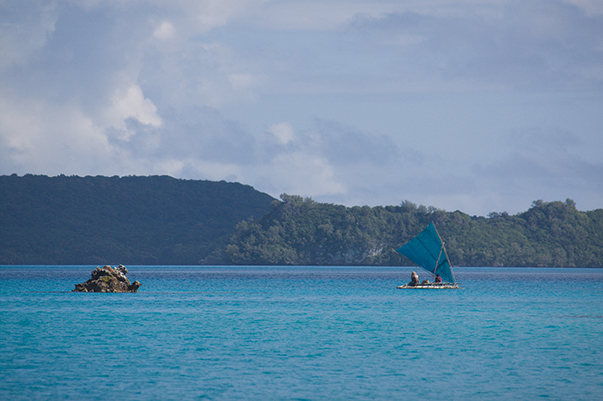On paper, crossing the Pacific in one season seemed like a perfectly good plan. But once there, we were like kids in a candy store: everything looked so good. We wanted it all! So when the chance came to decelerate our cruise from a two year run into a three year jog, we grabbed at it like the greedy sailors we are (published March 2016)
There is just too much to see, too quickly. So many fascinating islands and cultures. Fiji, Vanuatu and New Caledonia were all at the far end of our itinerary. Surely they all deserved more than a quick fly-by? Or so we supposed, because we actually had very little information on cruising in those areas. Right up to the time when we left New Zealand at the start of our second Pacific season, we had little notion of what a cruise in Fiji might look like. In part, that’s because Fiji is one of the few Pacific island groups that couldn’t be tackled in a one logical, leeward-to-windward direction. There are choices to be made, zigs to be zagged. And more than what any sane sailor can cover in a single season. For the spoiled cruisers we had become, a real conundrum.
So where to begin?
CLEARING INTO FIJI
Most sailors coming from Tonga or New Zealand aim for one of three ports of entry on the east side of Fiji. The southernmost port of entry is Suva, a busy industrial port. The main attraction of this unattractive port is that it cuts a day off a New Zealand to Fiji passage, no small consideration for sailors ready to cry Land Ho! As the capital of the island nation, Suva hosts a number of embassies, a practical consideration for wishing to apply for visas for Indonesia or Papua New Guinea.
Levuka, on the other hand, is reputed to be one of the most interesting colonial towns in the South Pacific and offers all the basics, too: supermarkets, gas stations and restaurants. However, the anchorage is too exposed to be comfortable in southeasterlies above 10-15 knots.
Savusavu, the northernmost of the three, has become many a cruiser’s favorite, thanks to its good shelter and services. It is a medium-sized town with a big heart and everything the post-passage cruiser needs, from fuel stations to large supermarkets and a good selection of shops and restaurants. Savusavu’s friendly inhabitants, both native Fijians and Indo-Fijians, provided a lovely welcome in our first Melanesian destination.
One limitation of Savusavu is space in the narrow confines of the deep water creek, where moorings are a must. Ideally, you’d email ahead to reserve a mooring in Waitui Marina, Copra Shed Marina (which also offers docking space), or Savusavu Yacht Club. Savusavu is the home base of Curly Carswell, who runs a morning radio net and offers weekly seminars on cruising in Fiji—a great value, as are his cruising notes and waypoint packages.
Take note that weekend check-ins rate overtime above and beyond the F$170 charged for a weekday entry. Wherever you clear in, stock up fully before heading out to quieter corners of Fiji. Vodafone and Digicel are two excellent phone/Internet providers; we were able to connect to the Internet in nearly every corner of Fiji (one notable exception being the southern Lau group).
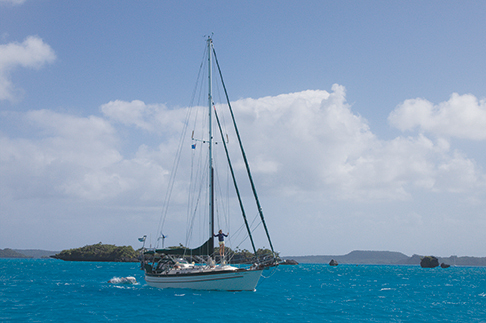
CRUISING IN FIJI
Reefs, reefs and more reefs: Fiji is not a destination for the faint of heart. For the first time in three years of cruising, we took to cautiously relying on a chartplotter. Still, electronic charts, GPS and hand-me-down cruising tracks are no guarantee of safety, so the prudent sailor will always keep a careful lookout for unmarked dangers and set sail only in good visibility. At least, that’s the theory.
In practice, we found it nearly impossible to sail only in good visibility, especially on the overcast, eastern side of Fiji. Even if we managed to leave one anchorage under clear skies, clouds would inevitably move in, forcing us to make more “blind” harbor entries (relying entirely on electronics) than we’d like to admit to. Distances are such that overnight trips are unavoidable when heading for off-lying island groups such as the Lau group or Yasawas.

For all the challenges, cruising in Fiji promises rich rewards. Beautiful tropical landscapes are only one plus; interactions with locals are another. It all starts with the sevusevu ceremony, a must in any traditional village (see sidebar). Beyond that formality, a friendly wave and call of “Bula!” (hello) earned us many invitations to tea or lunch. Islanders in remote places are always happy for practical gifts such as tea, rice, batteries, sugar, flour, fishing gear and the like, since supply ships often skip stops. English is one of the official languages of Fiji, and all but a few village elders and very small youngsters seemed completely fluent.
No single article can do justice to a cruising ground as rich or complex as Fiji; this is just an overview. For detailed cruising notes, start with the excellent s/v Soggy Paws website (www.svsoggypaws.com), with its free compendium and links to other guides (all free).
WHICH WAY AROUND?
Fiji is comprised of two large islands, Viti Levu (“Big Fiji”) and Vanua Levu (“Big Island”). The best cruising is to be found among the smaller, off-lying islands. Once you’ve explored the east side of Fiji, you’ll have to decide how to reach the west side. Will you sail over the top of Viti Levu or around the bottom? Going over the north allows for day hopping, but given the extensive reef system there, it’s more of a connect-the-dots GPS exercise than kick-back-and-relax sailing. We found the reef reasonably well marked and Curly’s waypoints absolutely spot on.
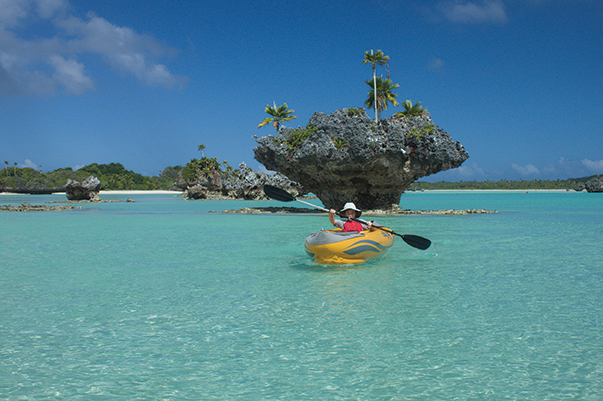
Sailors who head west along the south coast of Viti Levu usually do so in a couple of overnights, starting with one to Kadavu (see below). Both the north and south coasts of Viti Levu are more of places to transit than to linger in; you’ll find yourself drawn ahead to the more appealing cruising grounds on Fiji’s west coast.
Fiji straddles the International Date Line, although the entire country shares one time zone and date. It’s great fun to watch logbook entries jump from longitude east to west and back again, sometimes several times a day. Either way, it’s a long, long way from Greenwich, England.
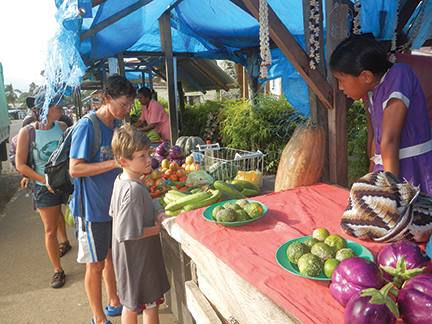
THE NORTHEAST: VANUA LEVU AND ISLANDS
If you’ve cleared in at Savusavu, the logical place to start cruising is the northeast end of Fiji where highlights are many and varied. Viani Bay is 50 miles from Savusavu, a popular spot thanks to pleasant surroundings and world-class diving on Rainbow Reef. Dive operators make pick-ups directly from boats in Viani and even offer a yachtie’s discount (we paid US$100 for an unforgettable two-tank dive with Taveuni Ocean Sports). Thanks to a good Vodafone signal in Viani, you can easily surf the Internet and call dive operators.
The lush mountain scenery of Taveuni, the “Garden Isle” of Fiji, is not to be missed. Hire a local cab for a day trip to the windward side to hike beautiful trails and multiple waterfalls. The same cab can take you to the natural water slide near Somosomo (rated the top site in Fiji by our nine-year-old). Since its anchorages are quite exposed, Taveuni is best visited in settled weather.
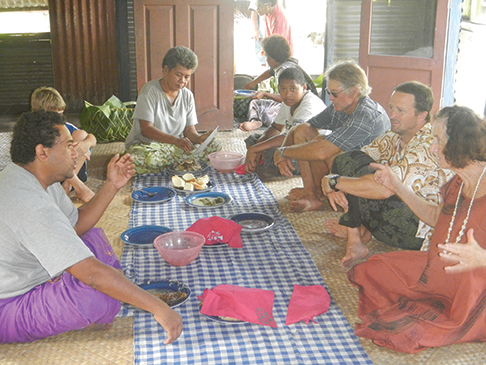
Other prime destinations on the northeast side of Fiji include the lovely islands of Qamea and Matangi, as well as scarcely visited Budd Reef (another stop for settled weather). The islands of Rabi and Kioa are notable as Polynesian enclaves within Melanesian Fiji. Friends reported idyllic, virtually empty anchorages here once a weather window sparked a mass exodus of the cruising fleet to the Lau group. Even fewer cruisers venture over the reef-strewn north side of Vanua Levu, a place to truly get away from it all.
TO WINDWARD: THE LAU GROUP
The Lau group is something of an awakening beauty, since these islands have only opened to cruisers in recent years. Most sailors wait for a brief disturbance to the trade winds to head there, grabbing a short period of northerlies or calm days. Make sure you head out at the first opportunity, since the next chance may be two to six weeks away. Timing your arrival is important, too, since most atolls have narrow passes that can usually only be run at slack water and in good visibility.
Be warned: the secret is out. Once-isolated atolls now see more and more yachts—even dozens at peak times. The two most-visited Lau islands are Vanua Mbalavu at the northern end of the chain and Fulanga at the southern end. Other atolls of the Lau group have trickier passes and therefore fewer visitors.
Local chiefs levy modest visitor’s fees, but who can begrudge them a chance to finance school fees and community improvements? These remote villages generally operate outside the cash economy, so the fees are well appreciated and apparently well-spent, with chiefs and elders allocating funds. Other than this fee, we went a month without spending a cent in the Lau, trading small goods for fresh fruit.
Many cruisers rate Fulanga’s incredible lagoon as Fiji’s top spot, and we’re inclined to agree. A huge, sandy expanse dotted with tiny mushroom-shaped islets, it’s a paradise for swimming and kayaking. Some cruisers spend weeks diving, snorkeling, and generally revelling in the scenery here. We were given a warm reception at the main village and later anchored in 15 feet of sand in a seemingly endless pool of turquoise water. The visitor’s fee here is $50 per yacht.
Vanua Mbalavu (“Long Land”) has several attractions. One is the main island, where you can visit different villages and take scenic walks. The biggest draw card of the atoll is the Bay of Islands, a compact but captivating spot where boats anchor among cliffy green islets. Snorkeling is good if not spectacular, and a number of caves dot the pocked shore. The village of Daliconi controls fishing rights to the Bay of Islands; do your sevusevu and pay a visitor’s fee of $30 per person there.
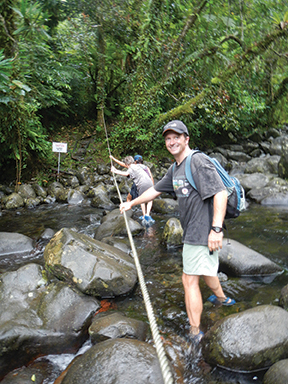
OVER THE TOP
Cruisers with time to linger can pick their way across the top of Viti Levu, staying within the fringing reef and calling at a number of pleasant anchorages. This calls for a keen eye on the chartplotter navigation and potentially, a fair amount of motoring.
Two places along the north coast merit special mention. First, the diving off Nananu-i-cake Island and Volivoli Point is highly rated (book dives through nearby resorts). The nearby town of Rakiraki is a good place to reprovision. To get there, anchor off Ellington Wharf or Volivoli and grab a taxi to town (F$50 round trip), where there are large supermarkets, gas stations, banks, and an open air farmer’s market. On the minus side, there is no reliable source of drinking water in this area and the anchorages are deep (40-60 feet).
This northern route is especially attractive as a jumping off point for the Yasawas. We weighed anchor in Volivoli in the afternoon, put the brakes on for most of the 55 mile crossing of Bligh Water (yes, that Bligh, who passed through during his open boat odyssey after the mutiny of the Bounty), aiming for a dawn arrival off Round Island Passage at the northern end of the Yasawas.
UNDER THE BOTTOM: KADAVU AND THE SOUTH COAST
Alternatively, sail around the south side of Viti Levu and call in at Kadavu for its world-renowned diving. While the island is peppered with a few low-key resorts and villages, be prepared to be entirely self-sufficient in terms of provisions. Sailors without their own dive gear can book a trip with one of the resorts.
The only other notable point of interest along the south coast of Fiji is Likuri, where the Robinson Crusoe Island Resort hosts torchlit dance performances. And from there? You’re ready to slingshot around to the west side of Viti Levu and take your pick of several marinas (including Vuda Point and Denerau) or beautiful island cruising grounds.
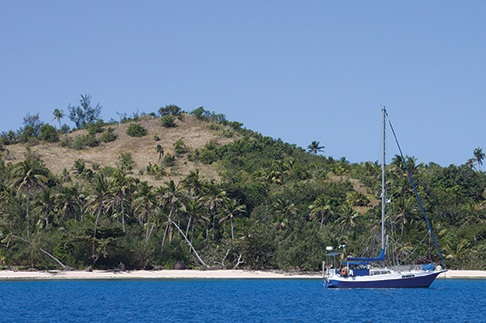
THE WEST SIDE: THE MAMANUCAS AND YASAWAS
Conventional wisdom seems to depict these island groups as spoiled, “not the real Fiji.” A pity, because the development is hardly as intrusive as some insist. Having been warned of party-all-night resorts and corrupt villagers, we were delighted to find peaceful anchorages and friendly people. Even at the Blue Lagoon, the busiest spot in the Yasawas, we found “only” a dozen spread-out boats and a very low-key resort. Small cruise ships will drop anchor and claim sections of beach for their guests, but they move on quickly. Even at peak times, island trails are virtually unvisited, a walker’s paradise for the taking.
The west side of the Yasawas are one big blank spot on the chart, except for bold letters: UNSURVEYED. A constant lookout for isolated dangers is a must, even if you stick to tracks handed down by other sailors. The good news is that this side of Fiji is much drier and sunnier than the east, meaning good visibility.
The south end of Waya Island has some of the most stunning scenery in the Yasawas, while Drawaqa draws visitors with its promise of snorkeling with manta rays (often too many visitors, including resort guests). The Blue Lagoon is neither as spoiled nor overcrowded as some claim, and we found it to be a lovely place to catch up on business, using the strong Internet signal. A local farmer also makes the rounds of the anchorage by skiff, making it possible to stock up on produce. Besides these well-known spots, there are a dozen other anchorages where you can hole up for a day or a week, claiming the views to yourself.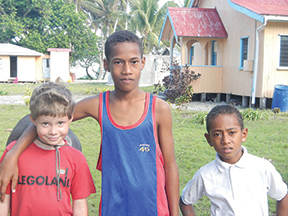
The Mamanucas are another mine field of reefs, though slightly better charted. High, craggy islands draw intrepid sailors to the likes of Monuriki, where Tom Hanks’ Castaway was filmed. Sooner or later, all roads lead to Musket Cove Marina, which offers moorings, dock space, and full access to resort facilities. Musket Cove is an aggregation point for cruisers, a great place to catch up with friends—starting with the pool and barbecue area!
LOOKING BACK
All good things must come to an end, and for most sailors, this means clearing out in Lautoka or nearby Vuda Point Marina (a new service that will hopefully be continued). The marina in Denerau is convenient to Nadi airport for crew changes.
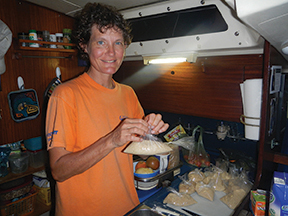
It seems we can never leave a place without declaring it another of our favorites, but that’s the South Pacific for you. So what makes Fiji special? The friendly and outgoing people, for one thing. Varied landscapes (above and below sea level) are another, with a lot of superlative scenery packed into a relatively small space. Prices are good, too, especially for staples and the bountiful produce available in town markets. It’s no wonder that some crews devote several seasons to Fiji, coming back again and again to visit old friends and favorite places. No matter how long you spend here, Fiji will provide memories for a lifetime.
Nadine Slavinski is the author of Lesson Plans Ahoy: Hands-On Learning for Sailing Children and Home Schooling Sailors. Together with her husband and young son, she cruised the Atlantic and Pacific aboard her 1981 Dufour 35, Namani. She is currently at work on The Silver Spider, a novel of sailing and suspense, as well as Pacific Crossing Notes: A Sailor’s Guide to the Coconut Milk Run. See nslavinski.com for more information and free resources on home schooling.
DISPELLING THE MYTH OF SEVUSEVU
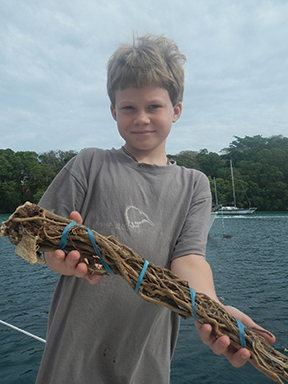
How often do you get an official audience with a real chief? Fijian custom dictates that visitors present themselves to village chiefs with an offer of yaqona, the root used to make traditional kava drink (available in dry bundles in all town markets). Not to worry; it’s not as intimidating as it sounds. All it takes is stepping ashore and asking for the village headman (Turanga ni Koro). He will present you to the chief for what’s usually a 15 minute ceremony of chants and speeches. The only tricky part is clapping at the right moment and downing your kava in one swig. Kava is an acquired taste but only mildly heady; even a lightweight won’t keel over from one bowl. Morning sevusevu might bypass the drinking part entirely, while afternoons sometimes turn into longer drink-a-thons. Beware that an empty kava bowl will be refilled for a second (and third, and fourth) round unless you excuse yourself with a vital mission, such as visiting the local school or checking on your anchor. Coordinate with other crews for a group sevusevu, dress modestly, and ask before taking photos. The excellent Mariner’s Guide to Fiji, a free booklet available in marinas, includes a detailed three page guide to all aspects of sevusevu.















